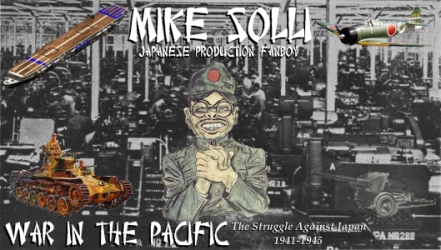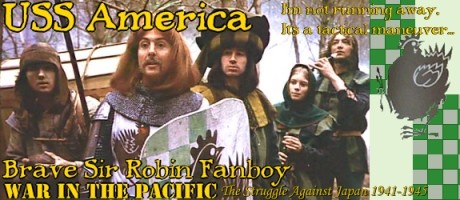Apollo11
Posts: 24082
Joined: 6/7/2001
From: Zagreb, Croatia
Status: offline

|
Hi all,
Interesting...
quote:
American Football: Parties, payments and Prostitutes: lurid scandal of US college football
By Rupert Cornwell in Washington for The Independent UK
University of Miami debacle has exposed the sham of amateurism in sport that generates billions
College football provides some of the most colourful images of the American sporting calendar:

One of autumn's great sporting shows has just begun. Last Thursday, at 6pm Eastern time, the Louisville Cardinals beat the Murray State Racers 21-9 in a televised game, and for the next four months, Americans will be transfixed by the raucous pageant of college football – that is, if they can escape the reek of what may be the biggest single scandal ever to hit a sport which has had more than its share of them.
Nevin Shapiro was a Florida businessman who operated a $930m (£580m) Ponzi scheme in the grocery business and is now paying for his crime in the federal penitentiary in Atlanta, Georgia. But that is not why for football cognoscenti he is now a household name.
Shapiro lavished support on the University of Miami's football programme, one of the largest in the country. Too lavishly, it would appear. Over eight years until 2010, he is alleged to have showered hundreds of thousands of dollars on dozens of players, providing them with cash, presents, free travel and other services, including prostitutes laid on at parties on a yacht he had bought for that purpose.
College football, like American football in general, is a brutal, take-no-prisoners sport. According to Yahoo Sports, which broke the story, Shapiro even claims to have paid "bounties" to U of M players who injured an opponent. But one thing, supposedly, makes it palatable. These are amateurs, who play for love of their sport and nothing else. The unfolding Miami scandal has proved that claim to be the fiction it is.
If you don't live here, it is impossible to grasp the scale of US college sport and the passion it generates. College football is at least as popular as the National Football League, whose season runs concurrently through the autumn, with the college games taking place on Saturdays and the NFL ones on a Sunday.
The NFL claims to be the richest league in all world sport – but put them together and the various college conferences (we would say leagues) are not far behind. Five conferences now boast billion-dollar contracts with network TV; just three months ago the PAC-12 conference, grouping a dozen of the largest West Coast universities, signed an unprecedented $2.7bn (£1.7bn) deal that alone will net each member college almost $20m annually for the next decade.
Add in ticket, memorabilia and kit sales, and you are talking seriously big money. In Britain, university sport conjures images of deckchairs by a summer cricket field, or a few hundred shivering spectators along the touchlines of a muddy football pitch. Not so in America.
The 10 largest football stadiums in the country are home not to NFL, but to college teams, and six of them hold more than 100,000 spectators – a fifth as large again as Wembley, Twickenham or the Olympic Stadium in Stratford. Tickets to regular games cost up to $50; season-ending bowl (or championship) games can set you back $400 or more.
If all this were not enough, every college football team has its own fund-raising groups, often with thousands of members, called "boosters", led by rich individuals who most likely were graduates of the college in question, and who pour yet more money into the programme. Shapiro, of course, has taken boosterism to a whole new level.
Some institutions with academic glamour, the Harvards and Princetons of this world, can afford to stay aloof from the frenzy; some small ones simply can't afford to join the frenzy. But more often than not, success on a football field is a bedrock of a college's prestige.
"Winning's not everything, it's the only thing," runs the famous dictum, distinguishing ruthless US attitudes to sport from the Corinthian traditions we British were once supposed to cherish. Tellingly, the phrase was coined not by some manic NFL coach or cynical, big-bellied major league baseball manager, but by a college football coach – "Red" Sanders of the UCLA Bruins – back in the 1950s.
In this climate, it is not surprising that coaches are often the best-paid members of a university's staff, the president included. Nick Saban for instance, is on $5.2m (£3.2m) a year at the University of Alabama, plus perks including country-club membership and the use of a private jet. And no devotee of the Crimson Tide, as Alabama's football team is known, doesn't reckon that he's worth it.
However, in this bloated, ultra-competitive sporting extravaganza, one category of participants is not paid – or at least is not supposed to be paid. These are the players themselves, without whom of course the whole industry of college football could not exist. And from this anomaly, scandals like that of the University of Miami are born.
In the last 18 months, the NCAA, the governing body of college sport, has investigated more than half a dozen of the largest football programmes. In every case the suspicion is the same; that players (or sometimes their families) received under-the-counter payments in cash or in kind, violating the supposed code of amateurism.
There are, of course, legitimate incentives, like full sports scholarships of which each college is allowed to offer a specific number. The players are supposed to study and graduate too (though it is not unknown for a few to be functionally illiterate, and for tutors secretly to write their exam papers). But that only scratches the surface of the problem.
Last year Reggie Bush, a running back with the University of Southern California before turning pro and winning the Super Bowl with the New Orleans Saints, was stripped of college football's top award that he won in 2005, on charges that he and his family had received $100,000 in improper payments from agents. The father of Cam Newton, a star quarterback, is said to have demanded $180,000 from colleges seeking to enrol his son: "It'll take more than just a scholarship," Cecil Newton reportedly told recruiters.
And so to the lurid goings-on at Miami. The previous benchmark for college football scandals was set in 1987 when the NCAA shut down the football programme at Texas's Southern Methodist university for operating a decade-long slush fund for paying players. By some measures, the Miami affair is even worse, and Mark Emmert, the NCAA president, publicly insists no punishment has been ruled out. In reality, few believe the so-called "death penalty" will be applied, not least because of the legal and financial imbroglio of untangling TV contracts, and the collateral damage to other teams in Miami's ACC conference.
So what will happen? Most likely, commentators say, much huffing and puffing, bans on a number of players and some slap across the wrist for the university. But no one wants to seriously injure, let alone kill, the goose that lays such golden eggs. "The game is too popular and the money is too big," Brent Clark, a former NCAA investigator, told The New York Times.
There is of course one very obvious, and very just remedy: pay, not punish, the performers off whose backs such enormous revenues are generated, in a particularly dangerous sport, for the reward of others. As Michael Irvin, himself a one-time U of M football star and later a multiple Super Bowl winner with the Dallas Cowboys, puts it: "I would have fallen for those aphrodisiacs that he [Shapiro] was throwing around. Listen, I wasn't able to handle it at 19 or 20. I wasn't even able to handle it at 30." Now aged 45, Irvin presumably knows what he's talking about.
But this simple solution surely will not happen either. For all the greenbacks, the grime and the graft, college football cherishes above all else its myths, and no myth is more central than the spirit of amateurism. The sham must go on. And it will.
Leo "Apollo11"
_____________________________
 Prior Preparation & Planning Prevents Pathetically Poor Performance! A & B: WitW, WitE, WbtS, GGWaW, GGWaW2-AWD, HttR, CotA, BftB, CF P: UV, WitP, WitP-AE
|
 Printable Version
Printable Version














 I thought I had a copy but apparently it went belly up with the computer.
I thought I had a copy but apparently it went belly up with the computer.


















 New Messages
New Messages No New Messages
No New Messages Hot Topic w/ New Messages
Hot Topic w/ New Messages Hot Topic w/o New Messages
Hot Topic w/o New Messages Locked w/ New Messages
Locked w/ New Messages Locked w/o New Messages
Locked w/o New Messages Post New Thread
Post New Thread